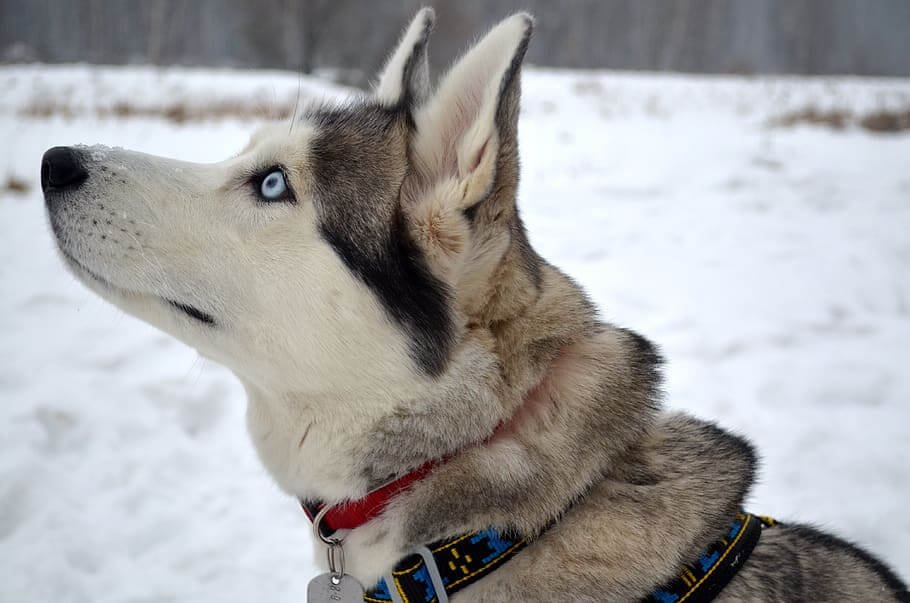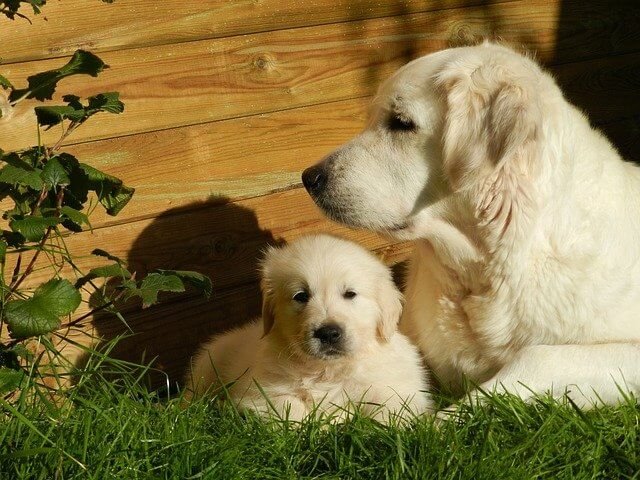
Raising a dog is more like raising a child than you’d think. You guide them, train them, and mold them into becoming the best versions of themselves. Over time, dog owners develop parenting styles that significantly impact their dogs’ behavior and overall development. This article explores various dog parenting styles and what they mean for your dog’s development.
Authoritarian Dog Parenting Style
This style of dog parenting is highly structured and involves establishing strict rules that the dog must follow at all times. There’s very little room for deviation from these rules. Discipline is often swift and punitive, emphasizing obedience and control over the dog’s behavior.
The authoritarian dog parenting style has its roots in traditional dog training methods where complete obedience was prioritized, especially for working dogs or those participating in competitive events. This style aims to shape the dog’s behavior through a system of rewards and punishments, with the owner maintaining full control and authority at all times.
However, while this method may seem harsh to some, it is worth noting that for certain dogs, particularly those of specific breeds or in particular roles, a high degree of discipline and structure is required. This includes dogs in service roles, such as police dogs, guide dogs, or search and rescue dogs, where strict obedience can be a matter of life and death.
Even so, it’s crucial to remember that dogs are sentient beings with their own emotions, needs, and capacity for learning and problem-solving. Implementing an authoritarian style requires careful balance to ensure that while the rules are enforced, the dog’s welfare is not compromised. Overly harsh or punitive methods can lead to fear, anxiety, and aggression, and they can damage the trust and bond between the dog and the owner.
Ultimately, the goal of any dog parenting style should be to nurture a happy, well-adjusted dog that is both obedient and confident. This involves understanding and respecting the dog’s individual needs, promoting positive behaviors, and fostering a strong, trusting relationship between dog and owner. An authoritarian approach can be part of this balance, provided it is applied with fairness, consistency, and care for the dog’s well-being.
Implications for Your Dog’s Development
Dogs raised in an authoritarian environment may become disciplined and obedient but may lack self-confidence and spontaneity. They might become overly dependent on their owners for cues on how to behave. Also, it may lead to stress and anxiety in dogs, especially if the punishments are harsh.
Permissive Dog Parenting Style
Permissive dog owners lean towards a more lenient approach, allowing their pets a high degree of freedom and rarely enforcing strict rules. They often lavish their dogs with treats and affection, sometimes to the point of overindulgence. Dogs raised in a permissive environment often lack structure, which can lead to a variety of behavioral issues.
Permissive parenting in the canine world can have an underpinning of well-intentioned love for the pet. These owners may think that by allowing their dogs unrestricted freedom, they are providing them with a happy life. However, a lack of boundaries can create an environment of uncertainty for dogs. Since they are not given clear guidance about what is acceptable behavior, they can become confused and anxious, leading to unwanted behaviors such as excessive barking, chewing, or even aggression.
Furthermore, with an excessive focus on affection and treats, dogs can also develop problems with obesity or become picky eaters. The absence of rules can also make it difficult for dogs to adapt to situations where they need to follow commands, such as at the vet, during grooming, or when interacting with other dogs and people.
It’s essential to understand that while affection and treats are important for nurturing a loving relationship with your dog, they need to be balanced with discipline and structure. Dogs are instinctive pack animals, which means they thrive in an environment where they understand their role and what is expected of them. A happy, well-adjusted dog is one who knows their boundaries and has been given the guidance and structure they need to thrive.
Implications for Your Dog’s Development
Dogs raised in a permissive environment can become stubborn and hard to train. They may develop behaviors such as excessive barking, digging, or chewing due to boredom or lack of discipline. These dogs can struggle to understand boundaries, which can lead to problems when interacting with other dogs or people.
Authoritative Dog Parenting Style
Authoritative dog parents, similar to their human counterparts, aim to strike a balance between discipline and freedom. They establish clear boundaries and rules, but they also demonstrate understanding and forgiveness when occasional lapses occur. This style encourages dogs to learn from their mistakes within a supportive and caring environment.
The key characteristic of an authoritative dog parenting style is the emphasis on guidance rather than punishment. These dog parents make it a point to explain, often through patient training and consistent reinforcement, the consequences of good and bad behaviors. They understand that dogs, much like humans, learn more effectively when they’re allowed to experience natural consequences in a safe context, rather than being subjected to harsh, punitive measures.
Authoritative dog parents show empathy to their pets, recognizing and responding to their emotions and needs. This fosters a stronger bond and mutual respect between the dog and the owner, promoting better communication and understanding. Dogs raised in this environment are often more confident, socially competent, and are better at coping with stress and novelty.
Despite its many benefits, the authoritative style requires patience and consistency to be successful. It can be challenging to balance between discipline and freedom, particularly when training a young, energetic, or stubborn dog. However, the effort is usually well-rewarded with a well-adjusted, well-behaved, and happy pet. With this parenting style, the primary goal is to guide the dog’s behavior while nurturing their individuality and promoting their overall well-being.
Implications for Your Dog’s Development
An authoritative dog parenting style typically results in dogs that are well-behaved, confident, and capable of making good decisions. These dogs are often good at socializing with other dogs and people and generally demonstrate a balanced temperament.
Neglectful Dog Parenting Style
Unfortunately, some dogs are subject to neglectful parenting, where their basic needs for food, water, shelter, and affection are not adequately met. This style of parenting is not just detrimental, but can lead to serious and lasting emotional and physical issues for the dog.
Neglect can take many forms, ranging from unintentional lack of attention due to the owner’s busy lifestyle to deliberate indifference or even cruelty. In the case of neglect, dogs may lack regular feeding, proper veterinary care, social interaction, mental stimulation, and exercise. They might be left alone for a significant portion of time, often in inadequate living conditions without shelter or comfort.
In this detrimental environment, dogs can suffer from malnutrition, disease, and injury, which can lead to physical distress and decreased life expectancy. Furthermore, lack of social interaction and stimulation can result in behavioral problems, such as aggression, anxiety, fear, or destructive behavior.
It’s important to understand that owning a dog is a long-term commitment that demands time, effort, and emotional investment. Every dog deserves a loving home where they receive the care, affection, and attention they need to live a happy, healthy life. If for any reason a person cannot provide this level of commitment, it is always more compassionate to find the dog a more suitable home or consider pet adoption alternatives.
Implications for Your Dog’s Development
Neglectful parenting can have severe detrimental effects on a dog’s development. Dogs raised in this environment can become anxious, aggressive, or overly submissive. They can also suffer from a range of health issues due to inadequate care and lack of medical attention.
Protective Dog Parenting Style
A crucial aspect of the protective dog parenting style involves ensuring your dog’s physical safety while fostering an environment for controlled exploration. At the intersection of these principles, the concept of fences, including the use of modern technology like invisible fences or cordoning off areas, comes into play.
Protective dog parents prioritize their pet’s safety above all. They use a variety of measures, including different types of fences, to prevent their dog from wandering into hazardous areas, consuming harmful substances, or having negative interactions with other animals or people.
Exploring Different Types of Fences
When it comes to creating a safe environment for your pet, there are several types of fences to consider. Traditional wooden or metal fences provide a visible barrier for your dog. However, they can sometimes be obstructive or detract from your property’s aesthetic appeal. On the other hand, an invisible dog fence, which relies on a GPS collar, offers a more aesthetically pleasing solution without compromising the safety of your pet.
The Invisible Dog Fence: A Modern Solution
The invisible dog fence is a revolutionary approach to keeping your dog safe within your property boundaries. This system uses GPS technology to create virtual boundaries that your dog is trained not to cross. Your dog wears a GPS collar that alerts them when they approach the boundary, teaching them to stay within a safe area.
Invisible fences are beneficial in that they allow your dog more freedom to explore and play without the risk of wandering off your property. They also don’t obstruct views or change the physical layout of your yard, as traditional fences do.
Choosing the Right Dog Parenting Style
Choosing the right parenting style depends largely on your dog’s breed, personality, and individual needs. Some breeds require more discipline and structure, while others thrive in a more permissive environment. Understanding your dog’s personality and needs will help you select the appropriate parenting style.
Regardless of the style you choose, remember to be consistent. Dogs, much like children, thrive on consistency as it provides them with a sense of security and understanding of what is expected of them. Different dog parenting styles can have profound implications on your dog’s development, shaping their behavior, personality, and overall well-being. It’s essential to choose a style that complements your dog’s needs and promotes their healthy development.
The goal is to nurture a relationship based on love, respect, and understanding, fostering a companion that is happy, healthy, and well-behaved. After all, raising a dog is not just about training them to obey commands, but also about nurturing their overall development.






